Few games generated as much joy in their Summer Game Fest demo room as Astro Bot, the latest from Astro’s Playroom and Astro Bot: Rescue Mission developer team Asobi. During my roughly three-quarters of an hour with Astro Bot, I almost erased its entire demo. I say “pretty much” because while the main missions accessible from its galactic-style menu were a breeze for the whole family, a few other hidden bonus missions were far from it, offering a challenge capable of rivaling some old PlayStation platformers (looking at you, Crash Bandicoot).
“This level in particular,” explains Nicolas Doucet, founder of Asobi studio and creative director of Astro Bot, while traveling through an ancient flamingo-themed world, “we want it to be enjoyable for everyone – but “Potentially, for a very, very young child, we almost wanted it to be like a playground, and that would be the only thing they would play on.”
At the same time, he continues, “we have to think about the difficulty curve and the challenge of the whole game. That’s why, outside of the main path to the boss, you have these additional challenges – and that is where you need to play.” You’ll also find plenty of PlayStation characters.” One of those characters, of course, is Lady Maria from Bloodborne, something Doucet told me has “no secret meaning,” despite many fans’ hopes that this could be some sort of allusion to a much-desired sequel, remaster, or PC port of Bloodborne.
But back to this playground idea, which, as Doucet further explains, strikes me as an example of the kind of thoughtful, forward-thinking thinking that the Asobi team has begun to build a reputation for. In each level there are small objects, items, or environmental design elements that serve no purpose other than to be fun to interact with. On this first level, for example, petals swirl in small puddles, a mischievous rodent appears and hides every time you approach it, and a diving board appears above a large swimming pool, which contains more secrets for the more determined players who want to complete the level fully.
“When you’re working on these games that are heavily focused on gameplay, it’s almost like every interaction is an opportunity to have a little ‘toy loop,'” says Doucet. “To the point where it would be a good thing if the player stopped looking for the level’s objective, but instead got distracted by just, you know, chasing butterflies and hitting trees and flowers, just because there are a nice loop of play there.”
Doucet describes this as a kind of “toy culture”, an approach he links to Astro’s Playroom, the PS5 pack-in game that emphasized the physical aspects of PlayStation hardware over the years – but which also makes echoing Doucet’s earlier career in quality assurance on Lego Games, then on EyeToy with PlayStation’s now-closed London studio. “When I went to PlayStation, I expected to find a very different type of company,” he said, before realizing that in reality the lessons of working on Lego “had been well translated.” “It was pretty much the same type of audience, you’re trying to get games into the hands of people who maybe have never played a game in their life.”
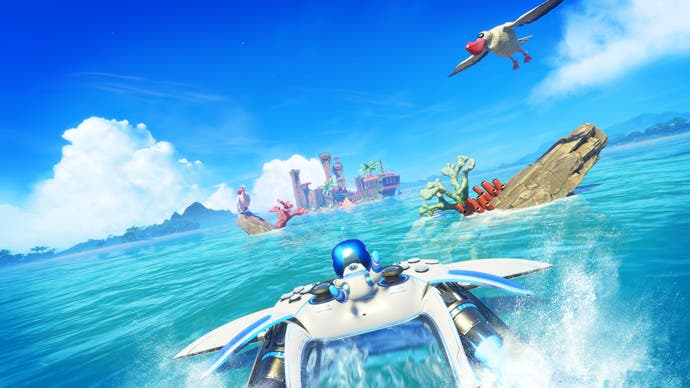
The obvious – and understandable – comparison to Astro Bot is to Nintendo games, particularly the company’s 3D platformers like Super Mario Odyssey and co. But beyond the basic comparisons – the third-person mascot, jumping on enemies, collecting coins and, in this case, the bespoke abilities picked up for each level – there’s a real connection to be made. One is the emphasis on “toy-like” moments, as Nintendo often glowingly calls it as a “toy maker” as much as a developer or manufacturer, but there’s also something remarkably Nintendo in the Asobi team itself, in its development practices and behind-the-scenes philosophy.
Nintendo gave a rare glimpse into its approach with two GDC conferences earlier this year, one on the miraculous physics of The Legend of Zelda: Tears of the Kingdom, the other on generating ideas for Super Mario Bros. Wonder. From these two elements, a clear lesson can be drawn not only from the general approach Nintendo takes, but also from the specifics of how it actually develops games, dividing teams into groups of miniature prototypes, for example, comprising only one person from each discipline. Or solicit ideas on post-its from the entire team.
Doucet had seen Wonder speak in particular and noted the similarities when I asked him if it matched his approach. “We try not to have the same minds in a room at the same time,” he said, “so it might be a mix of engineers and artists, maybe we’ll bring in people sound, animators and together it’s you who have the ideas.” The team then builds a “catalogue” of ideas, much in the same way Nintendo did with Super Mario Wonder, “and literally hundreds of ideas come out – the hardest part is actually thinking about it afterwards , Okay, which ones to prototype? We can’t prototype them all.
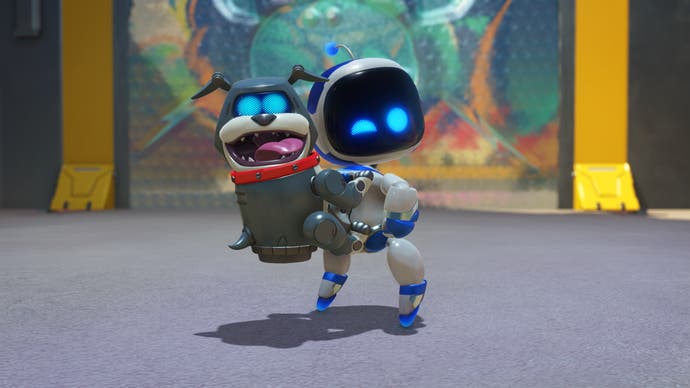
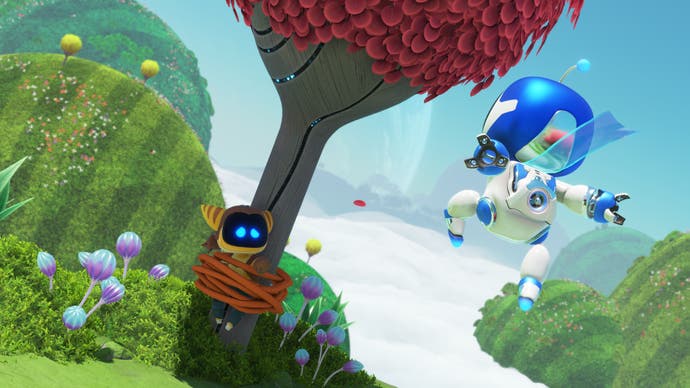
Beyond that, Doucet has spoken in the past about creating an environment that gives his team security but also, more importantly, a sense of purpose and meaning. One way Asobi does this is by intentionally creating games that don’t take as long to develop as a typical triple-A project, which Doucet says has “many advantages – all of which “First, it means you can do something.” otherwise with your life, which you know is important. »
The team also participates in two-week “marathons”, where they will stop each time to all play the game in that two-week period. “If you’re stuck in a tunnel for nine months or a year, and you still don’t know where it’s going, it can get very complicated, you know… so being able to always see what the next step is, and light on the horizon, the end of this mini-tunnel, that’s why we work on these two-week marathons – because they give you the opportunity to re-evaluate what you’re doing and why you’re doing it. which is really important, isn’t it?
Asobi also has a somewhat unique approach to creativity. While the core development team works on building a given game, another “B team” works in parallel, purely to prototype gameplay ideas – whether they be new future games in their own right, or just interesting mechanisms that could be used elsewhere. The studio is still prototyping. “Always nearby,” said Doucet. “We still continue like this, because we know that the future depends on it.”
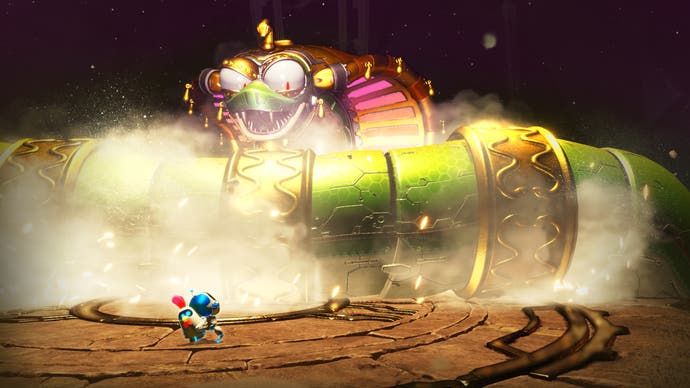
An example of this approach paying off can already be seen in the Astro Bot trailer, where at one point Astro gets a power-up that turns him into a big sponge. “This particular idea was born alongside Astro Bot: we asked this team to carry out new DualSense tests, outside of the platform.” Indeed, Doucet explains, if you put everyone in the main game, “of course you can come up with new ideas – but in a way your mind is now on jumping, running and everything else , and many ideas will be rejected automatically.
“We said: whatever, don’t even think about what game you could make, just explore cool stuff with a DualSense. And one of them was like a demo where it was just a big sponge, where you can put water in it and then, using the adaptive trigger, you can sort of squeeze the water out of it. The demo reflected how, at first, the sponge would be harder to squeeze before it became. “We would never have had the idea to turn Astro into a sponge, it was this demo done outside of it that influenced (the team) and us. gave confidence.”
As for my own experience with Astro Bot, this confidence is tangible. In three base levels, I felt more use of the DualSense than in any other PlayStation game, in part because of the simplicity of the controls. Even putting family accessibility aside – run around and you’ll notice the camera does a lot of the following work automatically, for example – the reduced number of inputs means the ones you use become sharper: pressing the two triggers to use a pair of extendable arms to grab something, swing back and set up Astro like a catapult, for example.
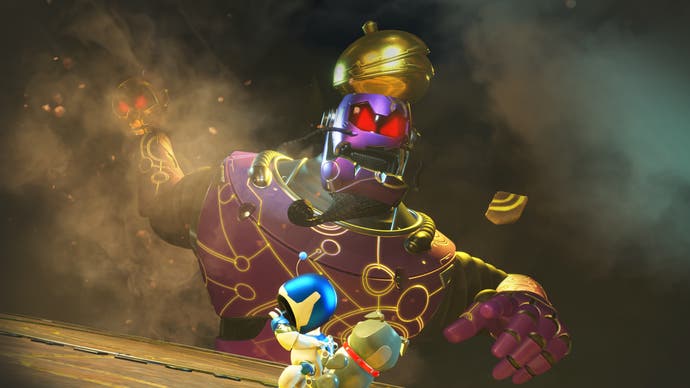
It’s tempting to reduce Astro Bot to just another piece of PlayStation marketing, after Playroom focused so much on showcasing its hardware alongside the PS5 launch. In fact, developers Team Asobi initially thought about ditching the PlayStation “skin,” as Doucet puts it, before changing their minds. “The question came up: ‘Should we do a tribute to PlayStation again?’ And a lot of the prototyping that we did, as well as the core gameplay of this game, is actually really separate from it: it’s new power-ups and levels inspired by pop culture and humor classic…it could have been just that.
“But then you’re like, ‘But why not add that PlayStation skin, because it was so good?’ I mean, if we can do something that goes even further, why not do it? So we doubled this bet. , and instead of the material, we kind of focused our attention on the characters.”
Regardless of the coating, the result of the demo I’ve played so far is one of the most joyful experiences of Summer Game Fest. Alongside Lego Horizon Adventures, another cheerful, drop-in family game, it’s also a marked shift for PlayStation – moving from their solemn, “sad dad” action epics to games that are not only family friendly but also a little less serious, making fun of themselves and taking a lighter approach towards the platform as a whole. It’s a welcome change – towards the pure design of the platform game genre and, with it, the pure joy that this genre can spark.
“Of course Astro is also a gamer’s game, we want to make sure we satisfy both of those audiences,” Doucet said later in our conversation. “But also, this might be the first game for a lot of kids, and so that responsibility is really big. But it’s also very exciting, because as a player you have your first memories, you have (your first) games – and the people who made those games really shaped your life, didn’t they? When it comes to potential early experiences of modern gaming, I couldn’t think of much better.